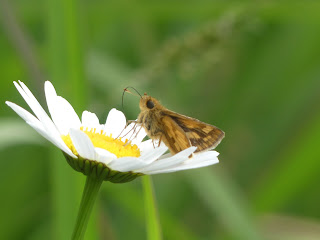Brown Thrashers
A couple weeks ago I encountered 2 (presumably) different Brown Thrashers; at least I saw them almost 2 hours apart and a healthy walk away from each other.
Here's the 2nd Brown Thrasher I saw that day.
Because I don't see them very often I wasn't sure who I was seeing, but the leading candidates were the Brown Thrasher or the Wood Thrush. When I looked at the pictures at home and looked them up in my field guides, the long tail, streaky rather than spotty marks on the breast/belly, and lack of lines near the eye convinced me that I had Brown Thrashers. (Brown Thrashers are also quite a bit larger than Wood Thrushes, though without a "reference bird" like an American Robin nearby it's kind of hard to judge size.)
Brown Thrashers are one of our general-purpose mimics, and it's believed that they have an even larger repertoire of songs than their Northern Mockingbird relatives. While the Northern Mockingbird will usually mimic a sound 3 times, the Brown Thrasher will mimic it only twice, making it possible to tell which mimic you're hearing even if you can't see them. And Brown Thrashers can be hard to spot; they're skilled at hiding in foliage and other vegetation. (I actually didn't hear either of them singing on this day.)
Although they're related to Northern Mockingbirds and Gray Catbirds, they have closer thrasher relatives in the western US.
 |
| May 13, 2022 at Duke Farms Photo 199462152, (c) jpviolette, some rights reserved (CC BY-NC) |
Here's the 2nd Brown Thrasher I saw that day.
 |
| May 13, 2022 at Duke Farms Photo 199463386, (c) jpviolette, some rights reserved (CC BY-NC) |



Comments
Post a Comment